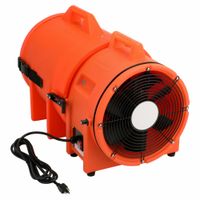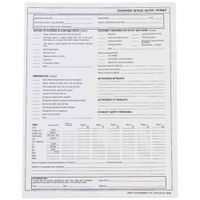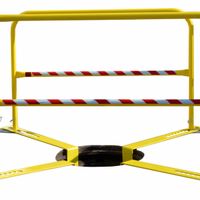Call +(254) 703 030 000 / 751 483 999 / 721 704 777
.....Read More
Frequently Asked Questions
What is a confined space?
A confined space is an area that is not designed for continuous human occupancy, has limited or restricted means for entry or exit, and is large enough for a person to enter and perform specific tasks. These spaces can pose significant risks due to their structure, contents, and the potential for hazardous conditions. Common examples include tanks, silos, storage bins, vaults, pits, and pipelines.
Confined spaces are characterized by their potential to contain hazardous atmospheres, such as toxic gases, flammable vapors, or oxygen-deficient environments. The limited ventilation can lead to the accumulation of dangerous substances, making it crucial to assess and monitor air quality before and during entry. Additionally, the physical configuration of confined spaces can present challenges, such as tight spaces, slippery surfaces, or the presence of machinery, increasing the risk of injury.
Entry into confined spaces often requires specialized training and equipment to ensure safety. Workers must be aware of the specific hazards associated with the space and follow established protocols, including the use of personal protective equipment (PPE), gas detectors, and communication devices. A permit system is often implemented to control access and ensure that all safety measures are in place.
Rescue operations in confined spaces are complex and require careful planning and coordination. Emergency response teams must be trained to handle the unique challenges posed by these environments, including the use of specialized rescue equipment and techniques.
Overall, confined spaces require careful assessment and management to protect workers from potential hazards. Compliance with safety regulations and standards is essential to minimize risks and ensure safe operations in these environments.
What are the hazards of working in confined spaces?
Working in confined spaces presents several hazards that can pose significant risks to health and safety. These hazards include:
1. **Oxygen Deficiency**: Confined spaces may have inadequate ventilation, leading to oxygen levels dropping below safe limits, which can cause suffocation.
2. **Toxic Atmospheres**: The accumulation of hazardous gases, vapors, or fumes can occur, leading to poisoning or respiratory issues. Common toxic gases include carbon monoxide, hydrogen sulfide, and methane.
3. **Flammable or Explosive Atmospheres**: The presence of flammable gases or vapors can create a risk of fire or explosion, especially if there are ignition sources present.
4. **Engulfment Hazards**: Loose materials such as grain, sand, or liquids can engulf and suffocate workers, making escape difficult or impossible.
5. **Physical Hazards**: Confined spaces often have limited entry and exit points, increasing the risk of entrapment. Additionally, they may contain moving machinery, sharp objects, or uneven surfaces that can cause injury.
6. **Temperature Extremes**: Confined spaces can have extreme temperatures, leading to heat stress or hypothermia, depending on the environment.
7. **Noise**: High noise levels can occur in confined spaces, potentially leading to hearing damage or communication difficulties.
8. **Limited Visibility**: Poor lighting can increase the risk of accidents and make it difficult to identify hazards.
9. **Psychological Stress**: The confined nature of these spaces can cause anxiety, panic, or claustrophobia, affecting a worker's ability to perform tasks safely.
10. **Access and Egress Challenges**: Difficulties in entering and exiting can complicate rescue operations in emergencies, increasing the risk of injury or fatality.
Proper training, risk assessment, and safety measures are essential to mitigate these hazards and ensure worker safety in confined spaces.
What equipment is needed for confined space entry?
For confined space entry, the following equipment is typically required:
1. **Personal Protective Equipment (PPE):** Includes hard hats, safety glasses, gloves, steel-toed boots, and coveralls. Respiratory protection such as air-purifying respirators or self-contained breathing apparatus (SCBA) may be necessary depending on the atmosphere.
2. **Gas Detection Equipment:** Portable gas detectors to monitor oxygen levels and detect hazardous gases like carbon monoxide, hydrogen sulfide, and flammable gases.
3. **Ventilation Equipment:** Fans or blowers to provide fresh air and remove hazardous gases or vapors, ensuring a safe atmosphere inside the confined space.
4. **Communication Devices:** Radios or intercom systems to maintain contact between the entrant and the attendant or rescue team.
5. **Lighting Equipment:** Explosion-proof or intrinsically safe lighting to illuminate the space without igniting flammable gases.
6. **Rescue and Retrieval Equipment:** Tripods, winches, and harnesses for safely retrieving workers in case of an emergency. Lifelines and retrieval systems are essential for non-entry rescue.
7. **Barriers and Signs:** To secure the area and prevent unauthorized entry, ensuring only trained personnel access the confined space.
8. **First Aid Kit:** Easily accessible and stocked with necessary supplies to address potential injuries.
9. **Entry Permit System:** Documentation outlining the hazards, safety measures, and authorization for entry, ensuring compliance with safety protocols.
10. **Training and Procedures:** Workers must be trained in confined space entry procedures, emergency response, and the use of all equipment.
This equipment ensures the safety of personnel entering confined spaces by addressing potential hazards and facilitating effective communication and rescue operations.
What is a confined space permit and why is it necessary?
A confined space permit is an official document that authorizes entry into a confined space, ensuring that all necessary safety measures are in place to protect workers. Confined spaces are areas that are not designed for continuous occupancy, have limited entry and exit points, and may contain hazardous conditions. Examples include tanks, silos, sewers, and pipelines.
The permit is necessary for several reasons:
1. **Hazard Identification**: It requires a thorough assessment of potential hazards such as toxic gases, oxygen deficiency, flammable atmospheres, and physical dangers like engulfment or entrapment.
2. **Safety Protocols**: The permit ensures that safety protocols are established, including ventilation, isolation of energy sources, and the use of personal protective equipment (PPE).
3. **Emergency Preparedness**: It mandates the development of an emergency response plan, including rescue procedures and the availability of rescue equipment.
4. **Authorization and Accountability**: The permit specifies who is authorized to enter the space, ensuring that only trained and competent personnel are involved. It also designates a responsible person to oversee the operation.
5. **Communication**: It facilitates clear communication among all parties involved, including entrants, attendants, and supervisors, to ensure everyone is aware of the risks and procedures.
6. **Compliance and Documentation**: The permit serves as a record of compliance with occupational safety regulations and standards, which is crucial for legal and insurance purposes.
Overall, a confined space permit is a critical component of workplace safety, minimizing risks and ensuring that confined space work is conducted safely and efficiently.
How do you ensure safety in confined spaces?
To ensure safety in confined spaces, follow these key steps:
1. **Risk Assessment**: Conduct a thorough risk assessment to identify potential hazards such as toxic gases, oxygen deficiency, flammable atmospheres, and physical dangers like engulfment or entrapment.
2. **Permit System**: Implement a permit-to-work system that requires authorization before entry. The permit should detail the work to be done, potential hazards, safety measures, and emergency procedures.
3. **Training**: Provide comprehensive training for all personnel involved, including entrants, attendants, and supervisors. Training should cover hazard recognition, use of safety equipment, and emergency response.
4. **Atmospheric Testing**: Continuously monitor the atmosphere for hazardous gases, vapors, and oxygen levels using calibrated gas detectors. Testing should be done before and during entry.
5. **Ventilation**: Ensure proper ventilation to maintain safe air quality. Use mechanical ventilation if natural ventilation is insufficient to control atmospheric hazards.
6. **Personal Protective Equipment (PPE)**: Equip workers with appropriate PPE, such as respirators, helmets, gloves, and protective clothing, based on the identified risks.
7. **Communication**: Establish reliable communication between workers inside the confined space and those outside. Use radios or other communication devices to maintain contact.
8. **Emergency Procedures**: Develop and practice emergency rescue plans. Ensure that rescue equipment, such as harnesses and retrieval systems, is readily available and that rescue personnel are trained.
9. **Supervision**: Assign a competent person to oversee the work and ensure compliance with safety procedures. The supervisor should have the authority to stop work if conditions become unsafe.
10. **Isolation**: Isolate the confined space from potential hazards by locking out and tagging out energy sources, and securing any moving parts or materials.
By implementing these measures, you can significantly reduce the risks associated with working in confined spaces.
What are the OSHA regulations for confined spaces?
OSHA's regulations for confined spaces are primarily outlined in 29 CFR 1910.146 for general industry and 29 CFR 1926 Subpart AA for construction. These regulations define a confined space as an area that is large enough for an employee to enter, has limited or restricted means for entry or exit, and is not designed for continuous occupancy.
Key requirements include:
1. **Permit-Required Confined Spaces**: Spaces that contain or have the potential to contain a hazardous atmosphere, engulfment hazard, or other serious safety or health hazards. Employers must develop a written permit space program, which includes measures to prevent unauthorized entry, identify and evaluate hazards, and establish procedures for safe entry operations.
2. **Entry Permits**: Before entry, a permit must be issued, detailing the space to be entered, purpose, date, authorized entrants, attendants, and any atmospheric testing results. The permit must be posted at the entry point.
3. **Training**: Employees must be trained to understand the hazards, use equipment properly, and know emergency procedures. Training must be provided to all employees involved in confined space entry, including entrants, attendants, and entry supervisors.
4. **Atmospheric Testing**: Before entry, the internal atmosphere must be tested for oxygen content, flammable gases and vapors, and potential toxic air contaminants. Continuous monitoring may be required.
5. **Rescue and Emergency Services**: Employers must ensure that rescue and emergency services are available and can be summoned quickly. On-site rescue teams must be trained and equipped to perform rescues.
6. **Equipment**: Employers must provide necessary equipment, such as testing and monitoring devices, ventilation equipment, communication devices, personal protective equipment, and lighting.
These regulations aim to protect workers from the hazards associated with confined spaces, ensuring their safety and health during entry and work activities.
How do you ventilate a confined space?
To ventilate a confined space effectively, follow these steps:
1. **Assessment**: Evaluate the confined space to identify potential hazards such as toxic gases, oxygen deficiency, or flammable vapors. Use gas detectors to measure air quality.
2. **Ventilation Plan**: Develop a ventilation strategy based on the assessment. Determine the type of ventilation required—natural or mechanical—and the equipment needed.
3. **Natural Ventilation**: If feasible, use natural ventilation by opening doors, windows, or hatches to allow fresh air to circulate. This method is suitable for spaces with minimal hazards and good air exchange.
4. **Mechanical Ventilation**: For spaces with significant hazards, use mechanical ventilation. This involves using fans or blowers to introduce fresh air and exhaust contaminated air.
5. **Equipment Selection**: Choose appropriate ventilation equipment. Axial fans are effective for moving large volumes of air, while centrifugal blowers are suitable for high-pressure applications. Ensure equipment is explosion-proof if flammable gases are present.
6. **Airflow Direction**: Establish a unidirectional airflow. Position the blower to introduce fresh air at the entry point and place exhaust fans at the opposite end to remove contaminated air.
7. **Ducting**: Use flexible ducting to direct airflow to specific areas within the confined space. Ensure ducts are properly sealed to prevent leaks.
8. **Continuous Monitoring**: Continuously monitor air quality during ventilation. Use portable gas detectors to ensure safe levels of oxygen and absence of hazardous gases.
9. **Ventilation Duration**: Maintain ventilation for a sufficient duration before and during occupancy to ensure a safe environment.
10. **Emergency Preparedness**: Have an emergency plan in place, including rescue procedures and communication systems, in case of ventilation failure or unexpected hazards.
By following these steps, you can ensure effective ventilation of a confined space, maintaining a safe environment for workers.
What training is required for confined space entry?
Training for confined space entry typically includes the following components:
1. **Regulatory Knowledge**: Understanding OSHA standards or relevant local regulations regarding confined spaces, including definitions, classifications, and requirements for entry.
2. **Hazard Recognition**: Identifying potential hazards such as toxic atmospheres, oxygen deficiency, flammable gases, and physical dangers like engulfment or entrapment.
3. **Permit System**: Learning the procedures for obtaining and using entry permits, which detail the work to be done, hazards involved, and safety measures.
4. **Atmospheric Testing**: Training on how to use gas detectors and other equipment to test for hazardous atmospheres before and during entry.
5. **Ventilation Techniques**: Understanding how to properly ventilate a confined space to ensure a safe working environment.
6. **Personal Protective Equipment (PPE)**: Instruction on selecting, using, and maintaining appropriate PPE, such as respirators, harnesses, and protective clothing.
7. **Emergency Procedures**: Developing skills for emergency response, including evacuation plans, communication protocols, and rescue operations.
8. **Roles and Responsibilities**: Clarifying the duties of each team member, including entrants, attendants, and supervisors.
9. **Communication Systems**: Training on effective communication methods between team members inside and outside the confined space.
10. **Practical Exercises**: Hands-on training sessions to practice entry, work, and rescue operations in a controlled environment.
11. **Continuous Education**: Regular refresher courses to keep skills and knowledge up to date.
This comprehensive training ensures that workers are prepared to safely enter and work in confined spaces, minimizing risks and ensuring compliance with safety regulations.
What is the role of a confined space attendant?
A confined space attendant plays a critical role in ensuring the safety and compliance of operations involving confined spaces. Their primary responsibility is to monitor and protect the workers inside the confined space, ensuring that all safety protocols are followed. They must maintain constant communication with the entrants and be prepared to initiate emergency procedures if necessary.
The attendant is responsible for keeping an accurate count of all personnel inside the confined space and ensuring that entry and exit procedures are strictly adhered to. They must be vigilant in monitoring the atmospheric conditions within the space, using appropriate detection equipment to identify any hazardous conditions such as toxic gases, oxygen deficiency, or flammable atmospheres.
In addition to monitoring, the attendant must prevent unauthorized entry into the confined space and ensure that all safety equipment, such as personal protective equipment (PPE) and rescue gear, is readily available and in good working condition. They are also tasked with maintaining a clear and unobstructed entry and exit path.
In the event of an emergency, the confined space attendant must not enter the space but instead initiate emergency response procedures, which may include alerting rescue teams, providing information about the situation, and assisting with the evacuation of entrants. They must be trained in first aid and CPR to provide immediate assistance if needed.
Overall, the confined space attendant acts as a safety guardian, ensuring that all activities within the confined space are conducted safely and in compliance with regulatory standards. Their vigilance and adherence to safety protocols are crucial in preventing accidents and ensuring the well-being of all personnel involved.
How do you perform a confined space rescue?
Performing a confined space rescue involves several critical steps to ensure the safety of both the victim and the rescuers:
1. **Assessment and Planning**: Evaluate the situation to understand the hazards present, such as toxic gases, lack of oxygen, or physical obstructions. Develop a rescue plan considering these hazards and the specific layout of the confined space.
2. **Notification and Communication**: Alert emergency services and ensure clear communication among the rescue team. Use radios or other communication devices suitable for confined spaces.
3. **Personal Protective Equipment (PPE)**: Equip the rescue team with appropriate PPE, including helmets, gloves, respiratory protection, and harnesses. Ensure all equipment is in good condition and suitable for the specific hazards identified.
4. **Atmospheric Testing**: Conduct atmospheric testing for oxygen levels, flammable gases, and toxic substances. Use portable gas detectors to continuously monitor the environment during the rescue.
5. **Ventilation**: If necessary, ventilate the space to improve air quality and reduce hazardous gas concentrations. Use fans or blowers to introduce fresh air.
6. **Entry and Rescue**: Only trained personnel should enter the confined space. Use a tripod and winch system for vertical entries. Maintain a lifeline attached to the rescuer and victim. Follow the rescue plan, prioritizing the victim's stabilization and safe extraction.
7. **Medical Assistance**: Provide first aid or medical treatment as soon as the victim is accessible. Have medical personnel on standby to administer care immediately upon extraction.
8. **Debrief and Documentation**: After the rescue, conduct a debrief to evaluate the operation's effectiveness and identify areas for improvement. Document the incident, including actions taken and any injuries sustained.
9. **Training and Drills**: Regularly train rescue teams in confined space rescue techniques and conduct drills to ensure readiness for real-life scenarios.



